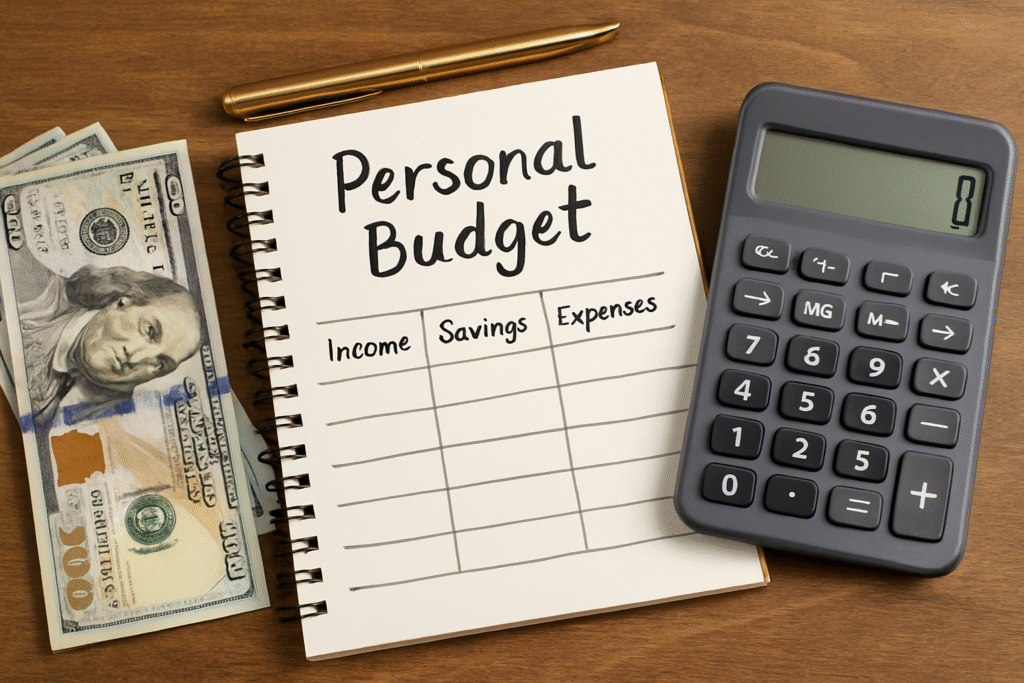Introduction
“Okay, I want to save money—but how much should I actually be saving?” If that question has ever crossed your mind, you’re not alone. It’s one of the most common financial questions people ask—and the answer isn’t one-size-fits-all.
Whether you’re earning $2,000 or $10,000 a month, there’s a practical way to determine how much to save while still living your life. This article breaks it down by income level, goals, and lifestyle so you can take action with confidence.
Why Saving Matters (Even If It’s a Small Amount)
Let’s face it—saving doesn’t always feel urgent. But here’s the truth: saving is what gives you freedom, options, and peace of mind.
Even small amounts, when saved consistently, build up over time and prepare you for:
- Emergencies
- Life goals (buying a car, house, travel)
- Retirement
- Unexpected expenses (medical bills, car repairs)
The 50/30/20 Rule: A Popular Starting Point
A classic budgeting method suggests dividing your income like this:
- 50% Needs: Rent, food, utilities, minimum debt payments
- 30% Wants: Dining out, entertainment, subscriptions
- 20% Savings & Debt Repayment: Emergency fund, investments, extra debt payments
If you’re just starting out, saving 20% of your monthly income is a solid goal. But what if 20% feels impossible—or too easy? Let’s break it down further.
How Much Should You Save Based on Your Income?
Here’s a practical guideline for different income levels (post-tax):
If You Make Under $2,000/month
- Recommended savings goal: 5%–10% ($100–$200)
- Focus: Emergency fund, paying off high-interest debt
- Tips:
- Use micro-saving apps (like Acorns or Qapital)
- Look for low-cost banking and credit options
If You Make $2,000–$4,000/month
- Recommended savings goal: 10%–15% ($200–$600)
- Focus: Building 3–6 months of expenses in an emergency fund, starting retirement contributions
- Tips:
- Use automatic transfers to make saving consistent
- Consider opening a high-yield savings account
If You Make $4,000–$7,000/month
- Recommended savings goal: 15%–25% ($600–$1,750)
- Focus: Diversify savings (retirement, short-term goals, long-term investments)
- Tips:
- Increase retirement contributions to 10% or more
- Allocate savings for specific goals (vacation, home down payment)
If You Make Over $7,000/month
- Recommended savings goal: 25%–35%+ ($1,750+)
- Focus: Long-term wealth building, early retirement, education funds, real estate
- Tips:
- Maximize 401(k), IRA, or Roth contributions
- Work with a financial advisor for personalized strategies
What If You Can’t Save That Much?
Don’t worry—it’s better to start small and build than to not start at all.
Try the “1% Challenge”:
Save just 1% of your income this month. Then increase it by 1% each month.
Focus on habits:
- Set up automatic transfers (even $10/week)
- Avoid lifestyle creep (increasing spending as income rises)
- Celebrate progress, not perfection
Remember: Consistency beats intensity.
Tailor Your Savings to Your Goals
Not all savings are created equal. Match your saving strategy to your needs:
Short-Term Goals (0–2 years):
- Emergency fund
- Vacation
- New tech, furniture, etc.
- Where to save: High-yield savings, money market accounts
Mid-Term Goals (2–5 years):
- Car, wedding, home down payment
- Where to save: CDs, conservative investment funds, savings bonds
Long-Term Goals (5+ years):
- Retirement, education, real estate
- Where to save: Roth IRA, 401(k), brokerage account, index funds
How to Stay on Track
1. Use Visual Trackers
Color charts, spreadsheets, or apps like Mint, YNAB, and Monarch.
2. Review Monthly
Ask yourself:
- Did I meet my goal?
- What challenged me?
- How can I improve next month?
3. Reward Yourself
Build in small wins to stay motivated—a movie night, a fancy coffee, or a guilt-free splurge.
Final Thoughts
There’s no magic number that works for everyone. But there is a formula that works for you—and it starts with being intentional.
Start with what you can, stay consistent, and increase when possible. The most important thing isn’t how much you save—it’s that you start saving at all.
Because every dollar saved today is one step closer to financial freedom tomorrow.
